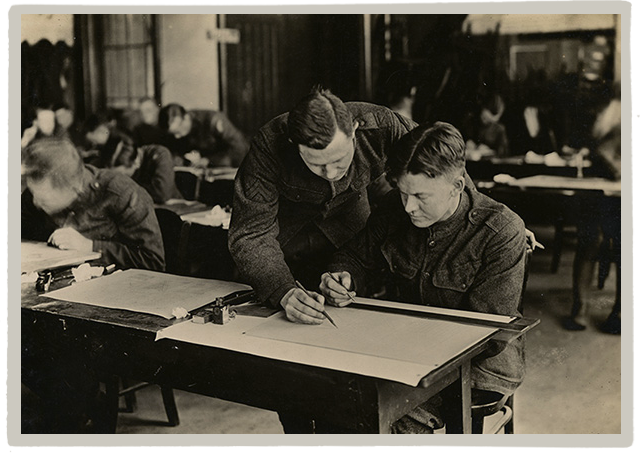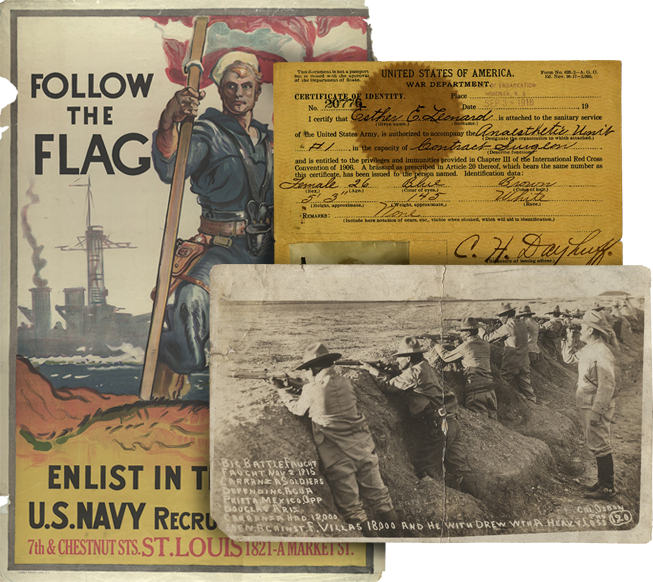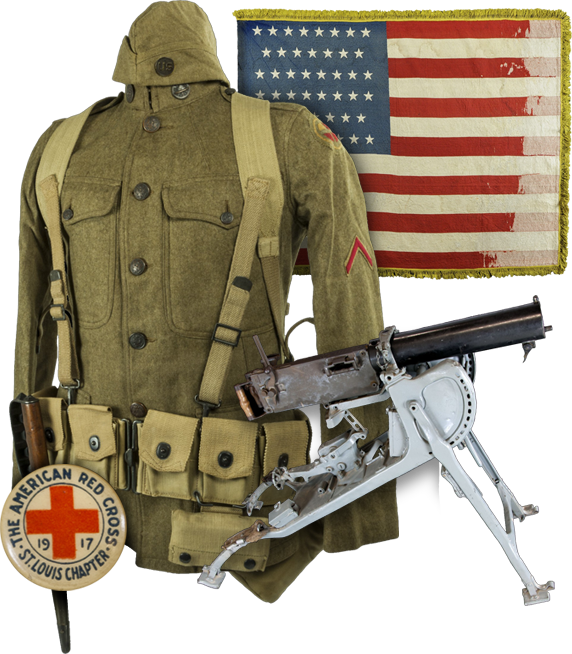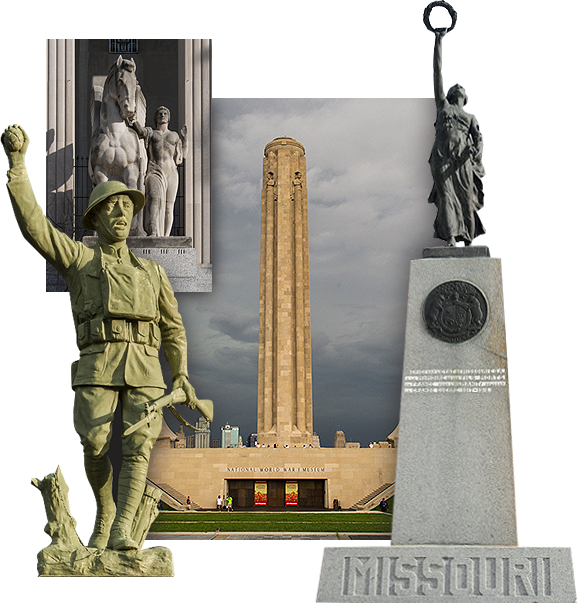History of the 805th Pioneer Infantry - July 5, 1918 - April, 1919

Transcript
American Expeditionary Forces Chateau de Chehery Chatel-Chehery (near Grand Pre, Dept. Ardehnes) France. By Paul S. Bliss Captain, Infantry, U.S.A. Adjutant. July 5, 1918 to April, 1919.

Transcript
Headquarters 805th Pioneer Infantry American Expeditionary Forces France. March 17, 1919. General Orders No 2 1. The following history of the 805th Pioneer Infantry by Captain Paul S. Bliss, Adjutant, is approved and will be placed on file with the Historical Section, General Staff, General Headquarters, American Expeditionary Forces, pursuant to G.O. 31, Par. 4, Section IV, G.H.Q., A.E.F. cs. 2. It is desired to make mention of and to pay tribute here to the excellent spirit which had prevailed in this regiment between the officers (white) and the enlisted men (colored). It has been one of co-operation throughout and that this has been so without exception is very gratifying to me. Chauncey B. Humphrey, Colonel Infantry, U.S.A. Commanding.

Transcript
[page 1] Foreword This brief history of the 805th Pioneer Infantry, American Expeditionary Forces, is written as an official document to be filed with the records of units in the A.E.F. It will perpetuate, in its way, the work of an organization which contains the best colored blood of America--an organization which earned for itself the unsolicited remark of many officers who visited or inspected it:

Transcript
[Page 2] Three officers from the Regular Army were assigned under separate special orders and on July 8 the first written order that passed over the Adjutant

Transcript
[Page 3] Meanwhile, barracks in Camp Funston, itself, at the eastern end of cantonment, formerly occupied by the 92nd. Division had been assigned and the Adjutant had arranged for the re-modeling of one of the office buildings, and had assigned barracks to the various companies. This was not without its difficulties, for and Engineer Service Battalion, under orders to move which were delayed in coming, was in place. 1. On July 12th, the following memorandum was issued

Transcript
[Page 4] Colonel Butler immediately inaugurated an intensive program I.D.R., Which kept his officers and men well occupied. He began an equitation class which all officers entitled to mounts gladly attended. Once a cavalry officer, and always a polo player, his methods of instruction were careful yet sure and rapid progress was made. Meantime copies of an extract of Par. 205, S.O. 148, War Department, dated June 25, had been received. They read as follows:

Transcript
[Page 5] Commanding General Camp Funston Kansas Direct eight hundred fifth and eight hundred sixth Infantry now organizing your Camp under series A tables of organization to organize under table One hundred three Tables of organization series B March 27 Nineteen hundred eighteen and designate regiment as Eight hundred and fifth and Eight hundred and sixth Pioneer Infantry respectively McCain 405 PM

Transcript
[Page 6] There are many pleasant memories of August. General Wood called for a regimental review daily on the parade ground opposite the Zone. The 805th passed the stand on several occasions, and made an excellent showing. Colonel [m.s. illegible: 1 wd] had obtained some additional mounts, superb animals, [m.s. illegible: 1 wd] the Mounted Service School at Fort Riley. The band of the [m.s. illegible: 1 wd] Infantry usually played on these occasions. [m.s. illegible: 1 wd] had been taken up by officers and men. The equitation class continued. Lt. Malcolm R. Ingraham was made athletic officer and games were plentiful. The officers had a game the day Colonel Humphrey reported and one or two more were played. Colonel Humphrey was interested in Tennis. Games were frequent. A tournament was started but was not concluded. Several quartets were organized. The men sang in their barrack rooms. Bugler Sam Cobb from the 25th Infantry took the buglers in hand. Cobb was a true artist of the bugle. He rendered taps in notes that were liquid music. The men took pride in it. It made for discipline. Musical instruments had been requisitioned but never came. An effort later to be recounted, was made to enlist an entire band but was fruitless. Private Billy Higgins, formerly a professional actor was transferred to the organization, from the Depot Brigade and became famous over night. The entire regiment attended a Vaudeville Show at the Liberty theatre, given by Higgins and a large assemblage of assistant. It was a great success and established the Regimental Fund. The Y.M.C.A. and Knights of Columbus secretaries did notably acceptable work among the men. A regimental exchange had been opened with Lt. M.P. Lewis in charge. It was a success. One week of August brought a wind so scorching that to face it was like standing before a smelter door. It shriveled Kansas corn, turning it from green to brown over night. Lt. Lewis

Transcript
[Page 7] ing Officer at that place. The Quartermaster Corps will furnish the necessary transportation and travel rations at the prescribed rate for the necessary number of days; also funds for the purchase of liquid coffee at the rate of 21 cents per man per day for the necessary number of days. The travel directed is necessary the military service. By command of Major General Woo: S.M. Williams, Major, General Staff, Executive Officer. Early movement had been expected in view of a coded telegram received at Camp Funston Headquarters [August] 6, signed

Transcript
[Page 8] It was expected that the port of embarkation would be Hoboken but certain ships were in Canadian ports ready to steam out and the following orders were received: Headquarters, Camp Upton, New York, August 30, 1918. Confidential Orders No. 361 Pursuant to instructions contained in Confidential Letter L-526, Headquarters, Port of Embarkation, Hoboken, [New Jersey], August 28, 1918, On Ship 450. 1st. Battalion, 805th Pioneer Infantry, consisting of twenty-six (26) officers, and one thousand (1000) men, Item Q-208, Phase 2. Attached Medical Personnel, consisting of three (3) officers and twenty-four (24) men will proceed so as to arrive at Montreal, Canada, on Monday, September 2nd, 1918. The travel directed is necessary in the military service. By order of Colonel Mallory: P.L. Thomas Major, Cavalry, Executive Officer. Official: Frank S. Booth Captain, Infantry Acting Adjutant. The First Battalion, under Capt. O.C. Adkins, entrained at Camp Upton, pursuant to the foregoing orders, Sunday, [September] 1, Itentered Canada and boarded

Transcript
[Page 9] On Ship No. 360 The Headquarters, Headquarters Company, Supply Company, and 2nd, Battalion 805th Pioneer Infantry, consisting of forty (40) officers and fourteen hundred and fifteen (1415) men, Item Q-208, Phase 2, Attached Medical Personnel consisting of three (3) officers and twelve (12) men will proceed so as to arrive at Quebec, Canada, on Tuesday, September 3rd. 1918. The travel directed is necessary in the military service. By order of Colonel Mallory: P.L. Thomas, Major, Calvary, Executive Officer. Official: Frank S. booth Captain, Infantry Acting Adjutant. Troops moving under the foregoing order crossed the Canadian line also on [September] 2. The entire regiment thus dates its foreign service from [September] 2. The First Battalion sailed [September] 2. on the Haverford. After being out several days this vessel put back, and went to Quebec. The reason for turning back was never made known. The troops were transferred to the H.M.S. Novara and the journey began again [September] 12. The vessel came to an anchor at Tilbury docks, near London, [September] 25, but owing to a railroadstrike, disembarkation was delayed until [September] 27. The Battalion went to Romsey, and sailed from Southampton to Cherbourg, France, continuing on to Rolampont (haute Marne) after five days of slow and painful railroad travel. It remained there for a few days to complete its equipment, then entrained for Clermont-en-Argonne (Meuse) where it arrived at 7 A.M. of [October] 10. The remainder of the regiment reached Quebec before noon [September] 2, and the Third Battalion boarded H.M.T. Orita, where Mr A.D. Cooley, commanding the Battalion, was senior officer and hence in charge of all the American troops aboard. Colonel Humphrey was placed in command of all U.S. troops and units aboard the R.M.S. Saxonia of which Capt. W.H. Hossack was skipper. The first Battalion of the 335th Infantry (white troops) under Major Hefner, and two Nurse Units (No. 56 under Miss Kathryn Morgan, and No. 67 under Miss Cecilia Brennan) each 100 strong, were also on the passenger lists, so that with the 805th contingent, the staunch old Gunarder carried slightly more than 2700 U.S. subjects. In the early night hours of [September] 3 the Orita and the Saxonia weighed anchor and began dropping down the St. Lawrence. From many ports there now gathered a great convoy of [m.s. illegible: 1 wd] shipping. The number reached 22 during the night of [September] 9-10 and a four-funnelled British destroyer took post the same time out the left corner. Ahead a stocky British cruiser which came on duty at the mouth of the St. Lawrence, showed the way. The ships rode so steadily in their assigned places that seemed as though they were all united by some powerful sub-

Transcript
[Page 10] surface framework. Now and again, in instant obedience to some signal from the man-o

Transcript
[Page 11] service will be counted from the day the officer, soldier or other authorized person arrived at seaport of England, France or other European country

Transcript
[Page 12] Rolampont was also the scene of the first funeral of an 805th Pioneer in Europe. Pvt. Everett Johnson of Company

Transcript
[Page 13] There was no stopping the Americans. The line was forced north of Varennes and the Boche was soon out of range. The last shell fell upon Chermont about [September] 28, and except for air raiders, the city was comparatively safe. Its railhead was soon to ration more than 80,000 American troops and its ruins shook with the thunder of Allied trucks. Clermont is located at the junction of the main road from St. Menehould and Lost Islettes to Verdun, and the straight road running north to Neuvilly and Varennes. The French used the former in shifting troops from the Champagne to the Verdun sector and up and down the latter plied and endless double line of staunch American camions, carrying food and supplies and bringing Divisions up to and back from the front. This was the situation when the 805th Pioneer Infantry arrived and established headquarters which it was to maintain there, as it turned out, for many months. [October] 3 was spent in establishing the troops under canvas at the top of Butte St. Anne, in Camp Bondet. There was buildings but occupancy was delayed for fear of Vermin. Pup tents were arranged beneath traces, and, in addition, were well camouflaged against the eye of the aviator. Overhead, the men watched allied airplanes darting now low, now high, occasionally grouped in

Transcript
[Page 14] Auzeville there to work upon the railhead. Company

Transcript
[Page 15] Jeremiah Beall, Chief Salvage Officer, Battle Area, First Army, a re-distribution over the Argonne-Meuse area had to be effected immediately. The area assigned to 805th Pioneer Infantry extended from Boult-aux-Bois almost due south to a point one kilometer west of Les Islettes; thence to Clermont; thence to Aubreville and Avovourt and Esnes; thence to Montfaucon via Betinincourt and Cuisy; thence north through Nantillois and Cunel to Bautheville; thence southwest through Romagne, Gesnes and Exermont to the main road just south of Fleville; and then north to Boult-aux-Bois through Fleville, St. Juvin. Grand Pre and Briquencay. The area comprised all of the Argonne Forest from Clermont north and the Varenees-Malancourt-Montfaucon-Romagne sections. More than 500 square miles of battlefield was included. A list of the articles to be salvaged would require a page. Chiefly they were Allied and enemy weapons and cannon, web and leather equipment, clothing and blankets, rolling stock, aviation electrical and engineer equipment. It was a gigantic task and did not near completion until the first week in March when more than 3,000 French carloads had been shipped. This immediate assignment to stations [November]. 20, was as follows: A-- Briquenay; B--Chevieres; C--La Forge; D--Chatel, Hq. 1st. Bn. Chatel. E-Binarville; F--La Chalade; G--Florent; H--3 kilometers north of Aubreville. Hq. 2nd. Bn. Camp Mahout, later Varenne I--Malancourt; K--Very; L-Barracks near Cunel, later Cunel. M--Varennes, later near Eclisfontains Hq. 3rd. Bn. Very. For some weeks truck transportation was scarce and work was slow, and consisted largely in getting material to roadsides. Capt. George E. Thompson, Q.M.C. was given charge of the Salvage work in the First Army Battle Area and on [January] 1, 1919, the following units were placed by him at the disposal of Col. Humphrey for the purpose of expediting the work; 339th Labor Battalion, Truck companies A,B,C, and F of 3rd Corps Artillery Park, 313th, 305th, 309th and 317th Salvage Units. The regiment had remained in the First Army one month after the signing of the Armistice and all troops were wearing the insignia of that Army-- the black letter

Transcript
[Page 16] At the same time, Major J.D. Patch, commanding the First Battalion since [December] 31, he having been again placed in command when Major Chinner was relieved. Company

Transcript
[Page 17] were hosts to 300 members of the General Staff College, students and instructors on their final Staff Ride over the First Army Battle Area during the first week of February. Representatives of several Divisions, especially the 82nd which had occupied the Chateau as Headquarters in October, returned and were gusts while looking over their battle grounds. The First Corps U.S.A. headquarters used the Chateau at one time. With the 82nd Division groups came Major G.E. Buxton of the Providence Journal, who was Divisional Historian--and also Corporal York (later Sergeant) who distinguished himself by capturing some 154 Germans near Cornay, single handed. To write Corporal York

Transcript
[Page 18] Far to the northeast along both banks of the Meuse a bitter resistance was again encountered, but the advance continued without pause until [November] 11th, the day the Armistice was signed, when the 42nd, 77th and 1st Divisions, in conjunction with the French, were looking down in Sedan, and the final phase of the Argonne-Meuse Battle was concluded. About these operations, the conversation at the regimental headquarters
Details
| Title | History of the 805th Pioneer Infantry - July 5, 1918 - April, 1919 |
| Creator | Bliss, Paul S. |
| Source | Bliss, Paul S. History of the 805th Pioneer Infantry. 05 July 1918 - April 1919. World War I Collection. A1771. Missouri History Museum, St. Louis, Missouri. |
| Description | On May 23, 1918, President Wilson directed the organization of eight colored infantry regiments |
| Subject LCSH | United States. Infantry. 805th pioneer regt.; United States. Army. American Expeditionary Forces; World War, 1914-1918--African Americans; Camp Funston (Kan.); Wood, Leonard, 1860-1927; Camp Upton (N.Y.); Argonne; Military training; World War, 1914-1918-- |
| Subject Local | World War I; WWI; Campaigns/Battles - Common names [Meuse-Argonne Offensive]; Department of Light Railways and Roads; Salvage Service |
| Site Accession Number | A1771 |
| Contributing Institution | Missouri History Museum |
| Copy Request | Transmission or reproduction of items on these pages beyond those allowed by fair use requires the written permission of the Missouri History Museum: 314-746-4510 |
| Rights | The text and images contained in this collection are intended for research and educational use only. Duplication of any of these images for commercial use without express written consent is expressly prohibited. Contact the Missouri History Museum's Permissions Office at 314-746-4511 to obtain written consent. |
| Date Original | July 5, 1918 - April, 1919 |
| Language | English |



